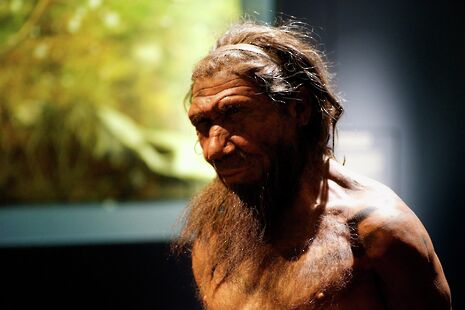Neanderthals: victims of human disease?
Genome sequences from Neanderthals reveal that some infectious diseases are perhaps far older than previously thought

Disease infections have had a profound impact on human history, from large-scale epidemics like the Bubonic Plague, which wiped out a third of Europe’s population in the mid-14th century, to the less deadly ailments that irritate us on a daily basis. Diseases also affect us in more intimate ways. As we evolve alongside pathogens, our genomes change: genetic variants that provide resistance are preserved while weaker ones die out. Understanding which infectious diseases plagued the first humans is no simple task, as much of the remaining artifacts from tens of thousands of years ago are fossilised bone. However, a growing number of high-quality genome sequences from Neanderthals and other early hominins (a term encompassing humans and their closest ancestors) have provided researchers with an immense repository of information, revealing that some infectious diseases are perhaps far older than previously thought.
The Neanderthals, who inhabited Eurasia from around 250,000-28,000 years ago, were hunter-gatherers who lived in small bands of 15-30 individuals. Such conditions, it has been postulated, were unsuited to the rampant proliferation of infectious diseases. In fact, it has been claimed that infectious diseases exploded long after the Neanderthals had been replaced by anatomically modern humans who migrated out of Africa and outcompeted Neanderthals and other hominins in Eurasia. Disease and pestilence exploded, the argument goes, with the onset of animal domestication and agriculture around 8,000 years ago, when large and dense populations living in proximity created the ideal conditions for diseases to jump from livestock and spread quickly throughout vulnerable populations.
A paper by Cambridge’s Charlotte Houldcroft and Simon Underdown of Oxford Brookes University synthesises evidence from pathogen genomes, early hominin genomes, and evidence from bones and other artifacts to propose an update to this paradigm. The authors argue it was likely that many diseases infected hominins far earlier than previously thought, and therefore that the agricultural era perhaps affected the dynamics of existing diseases more so than promoting the widespread emergence of novel human pathogens.
The story goes as follows: early humans migrated from Africa to Eurasia, carrying with them African diseases, and in their new home our ancestors encountered Neanderthals who carried a different subset of infectious diseases. Neanderthals and humans interbred – humans who are not of African descent carry around two per cent Neanderthal DNA – and almost certainly exchanged diseases. Exposure to the wave of unfamiliar pathogens carried out of Africa by humans probably contributed to the demise of the Eurasian Neanderthal population.
Detailed comparisons of modern human genomes with those of Neanderthals have revealed small bits of genetic information related to infection and immunity that researchers believe made their way into the human genome through interbreeding with Neanderthals. By conferring increased resistance to the new suite of diseases that humans encountered as they moved into Eurasia, these bits of Neanderthal DNA may have conferred an advantage on the humans carrying them, and therefore remained in the gene pool. In particular, researchers found Neanderthal-derived genetic variants protective against tick-borne encephalitis virus and bacterial sepsis in the modern human genome.
Some diseases thought to have been transmitted from animals to humans, such as the bacteria that cause typhoid and whooping cough, had actually been co-evolving with hominins long before being passed on to livestock. Such evidence bolsters the idea that these pathogens afflicted hominins prior to the onset of widespread agriculture. The rise of agriculture and the associated dramatic shift in population dynamics then aggravated their impact on human populations, ushering in the “age of pestilence and famine” which killed off the Neanderthals.
The authors’ synthesis of new genomic data may lead to a significant advancement in understanding, but ancient genomics still has much to offer. Further advancements in techniques for obtaining high-quality ancient DNA and in our ability to identify the clues that diseases leave in the genome may continue to provide exciting insights into how infectious disease impacted our ancestors’ lives.
 News / Emma May Ball U-turns on ‘accessible’ half-shift staffing28 April 2024
News / Emma May Ball U-turns on ‘accessible’ half-shift staffing28 April 2024 News / Students protest Trinity open day over Israel ties27 April 2024
News / Students protest Trinity open day over Israel ties27 April 2024 News / Rosie Freeman resigns as SU Women’s Officer29 April 2024
News / Rosie Freeman resigns as SU Women’s Officer29 April 2024 News / Foreign states could be stealing Cambridge research, warns MI528 April 2024
News / Foreign states could be stealing Cambridge research, warns MI528 April 2024 Comment / Why we should all work a part-time job26 April 2024
Comment / Why we should all work a part-time job26 April 2024




